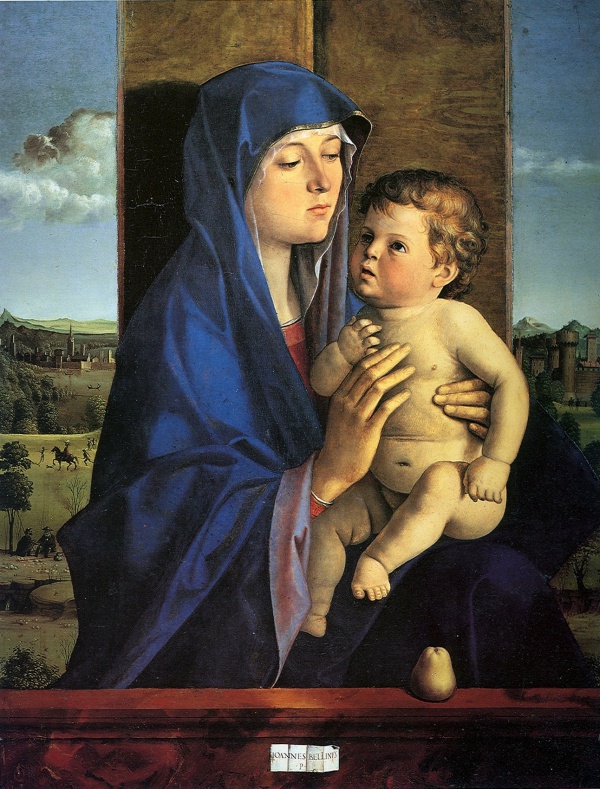Facts About Alzano Madonna
The "Madonna with Child" also known as the "Alzano Madonna" is an exquisite oil painting on panel by the Italian Renaissance master Giovanni Bellini, created around 1485. This remarkable work has resided in Bergamo since the 16th century, possibly arriving as part of Lucrezia Agliardi's dowry when she became an abbess at the monastery of Alzano Lombardo. After undergoing several ownership changes, it was eventually donated to its current museum in 1891.
In this painting, Bellini portrays the Virgin Mary and the Christ Child as bust figures prominently placed in the foreground. They are set against a backdrop evocative of a tapestry, reminiscent of the thrones with canopies often depicted in sacra conversazione of that period. The flanks of the painting reveal a landscape teeming with towers, castles, and miniature figures—elements characteristic of Bellini's oeuvre. In the foreground, a red marble parapet bears Bellini's signature and features a piece of fruit, which could symbolize original sin or serve as an emblem of the Virgin Mary, referenced in religious texts and hymns.
Art critics frequently regard this Madonna as a precursor to Bellini's later masterpieces, such as the "Madonna of the Red Cherubims" and the "Madonna of the Small Trees" both of which can be found in the Accademia Carrara.

 Slovenia
Slovenia